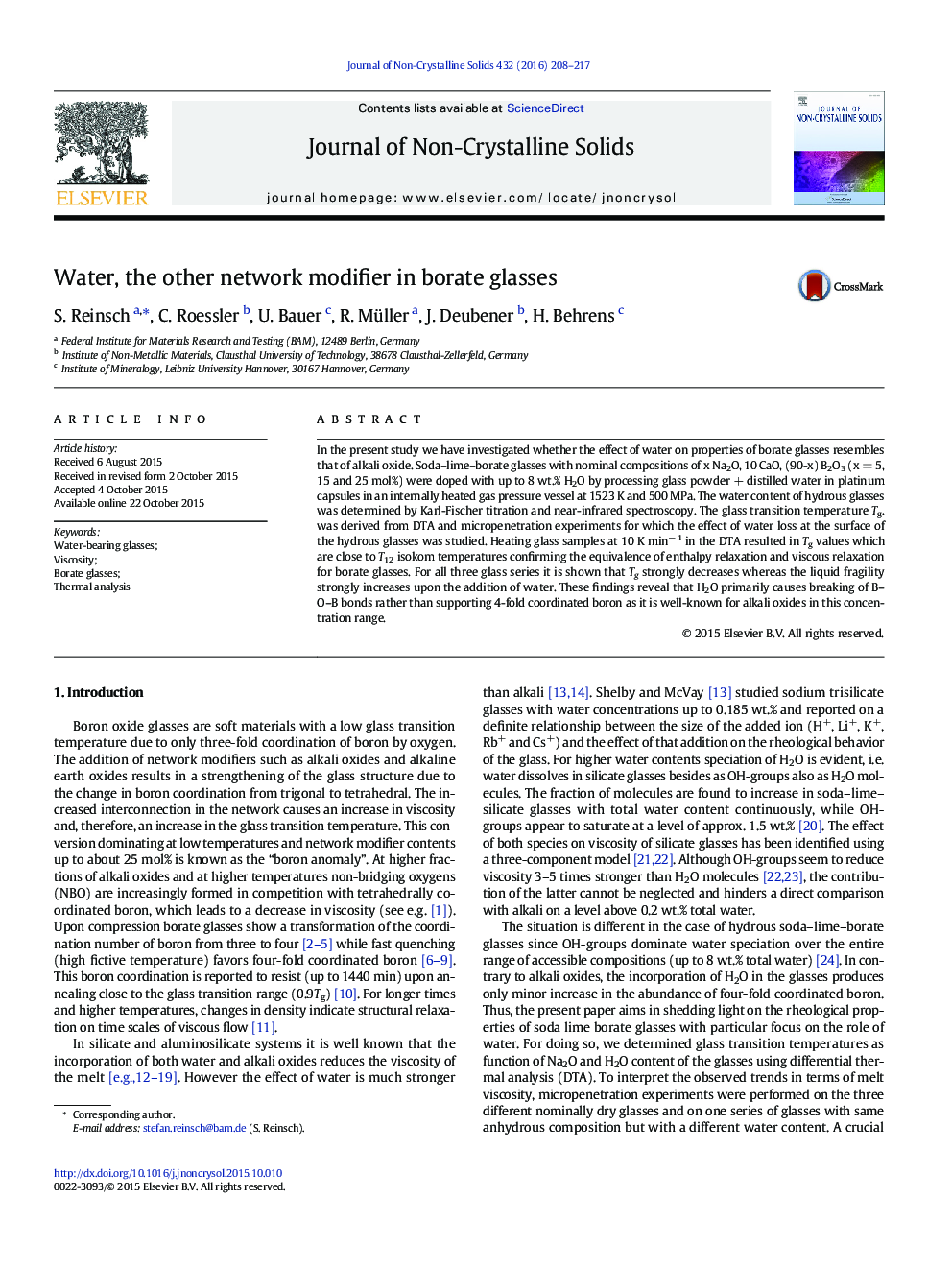| Article ID | Journal | Published Year | Pages | File Type |
|---|---|---|---|---|
| 1480406 | Journal of Non-Crystalline Solids | 2016 | 10 Pages |
•H2O in borate glasses mainly causes breaking of B–O–B bonds and reduces Tg.•Protons in borate glasses are unable to support 4-fold coordinated boron.•Hydration of borate glasses strongly increases liquid fragility.
In the present study we have investigated whether the effect of water on properties of borate glasses resembles that of alkali oxide. Soda–lime–borate glasses with nominal compositions of x Na2O, 10 CaO, (90-x) B2O3 (x = 5, 15 and 25 mol%) were doped with up to 8 wt.% H2O by processing glass powder + distilled water in platinum capsules in an internally heated gas pressure vessel at 1523 K and 500 MPa. The water content of hydrous glasses was determined by Karl-Fischer titration and near-infrared spectroscopy. The glass transition temperature Tg. was derived from DTA and micropenetration experiments for which the effect of water loss at the surface of the hydrous glasses was studied. Heating glass samples at 10 K min− 1 in the DTA resulted in Tg values which are close to T12 isokom temperatures confirming the equivalence of enthalpy relaxation and viscous relaxation for borate glasses. For all three glass series it is shown that Tg strongly decreases whereas the liquid fragility strongly increases upon the addition of water. These findings reveal that H2O primarily causes breaking of B–O–B bonds rather than supporting 4-fold coordinated boron as it is well-known for alkali oxides in this concentration range.
